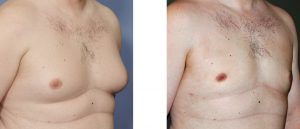Liposuction is one of the most commonly performed of all cosmetic procedures. From the neck down to the ankles, fat can be effectively removed with good outcomes and high patient satisfaction. It is estimated that over 500,000 liposuction procedures are performed in the United States each year. The vast majority of these are done in adults and for cosmetic purposes.
But liposuction can be used for more than just cosmetic changes but for reconstructive purposes as well. I would estimate that less than 5% of liposuction procedures performed are for some type of reconstruction or treatment of a medical problem.

Some types of lipomas may be removed with liposuction. Usually these have to be of significant size. Small ones are easily removed through very small incision because, even though they do have a true capsule, they can be popped out intact. If one elects to aspirate small lipomas, I prefer the use of syringe or microcannula aspiration using wall suction. This reduces the risk of creating irregularities and asymmetries. One disadvantage to lipoma liposuction is that the process destroys the tissue and prevents getting a good pathologic evaluation of the tissue. At the least, it would be unreliable.
Liposuction is also useful for tailoring or shaping reconstructive flaps. This is particularly useful in breast reconstruction when TRAM and DIEP laps are used or any type of flap which has a significant fat component to it. While such flaps can be thinned by re-elevation and direct fat removal, liposuction avoids opening any significant length of the incisions and eliminates the potential need for a drain after surgery.
One very relevant question to ask is whether insurance will pay for any reconstructive technique which uses liposuction. In theory, the method or tool used to do or modify a reconstructive procedure should not affect insurance covering a procedure which is medically necessary. But this is not always how insurance views what should otherwise be an obvious answer. If liposuction is coded as the method (CPT codes), it will raise a red flag and a likely denial. While this may be overturned in a subsequent appeal, it is better to avoid that entire process. Therefore, the procedure should be coded using the specific revisional codes that apply to the initial procedure. (e.g., breast reconstruction revision)
Dr. Barry Eppley
Indianapolis, Indiana


